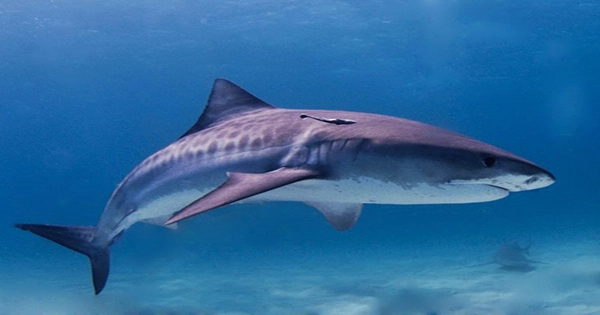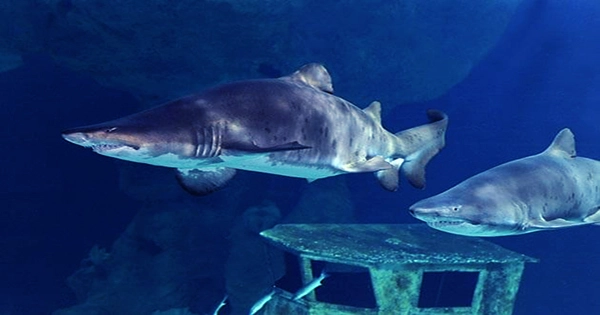Is it a scene if two sharks get it on in an aquarium and no one is around? Yes, in the instance of two sand tiger sharks who recently made headlines after being captured on camera mating at the Tennessee Aquarium? The extremely uncommon observation was made possible by the aquarium’s Secret Reef exhibit having live webcams operating all the time. The stream became a little hotter towards the end of January 2022, when a male made amorous approaches towards a female using its best asset: teeth.
Shark love bites are more forceful than human love bites, with the male utilizing his jaws and teeth to adjust the female in preparation for reproduction. To the uninitiated, the interaction appears to be a touch rough, and it can leave wounds on the females’ fins and bodies – but they’re prepared for it. In a statement obtained by IFLScience, aquarium director Thom Demas said, “If they’re facing the same direction, he’ll often grasp the female by the huge fin that hangs out of her side and bend his body around her.”

“It appears to be quite violent, but sharks breed in this manner.” It’s what they’re made for. Their skin is made up of tough’scales’ known as dermal denticles, which can be substantially thicker than males’. While they do sustain injuries during mating, they are usually minor and heal quickly.” The aquarium’s staff is now on the lookout for indicators that these attempts at reproduction were successful, and the female has become pregnant. If that’s the case, they can expect the new arrival(s) in nine to thirteen months.
Being ovoviviparous implies that the baby sharks develop inside the mother before hatching and being born as a live, swimming wee bonny shark (wondering what a baby shark is called? We’ve got your back). As the pregnancy progresses, older developing sharks will feed on their younger siblings for nutrition, making ovoviviparous pregnancies a bit chaotic. This indicates that a sand tiger shark may have killed its first prey before even emerging from the uterus (you can see one in-utero on an ultrasound scan here).
Intrauterine cannibalism, while beneficial for producing strong, capable kids, results in low birth rates (one of the lowest of any shark for sand tigers). This is bad news for a species that was listed as “critically endangered” in 2020. As a result, the prospect of a captive pregnancy and birth excites sand tiger sharks.
“The fact that this mating is occurring without human interference – just as a result of appropriate care and diet, as well as a healthy habitat – is a good hint that reproduction in a properly-designed habitat is possible.” That’s fantastic for the species, since our goal is to be able to manage them in human care in order to assist protect and offset their loss in the wild,” Demas added. If you’re curious about what the sand tiger sharks are up to these days, you can see them and the other Secret Reef residents here.













